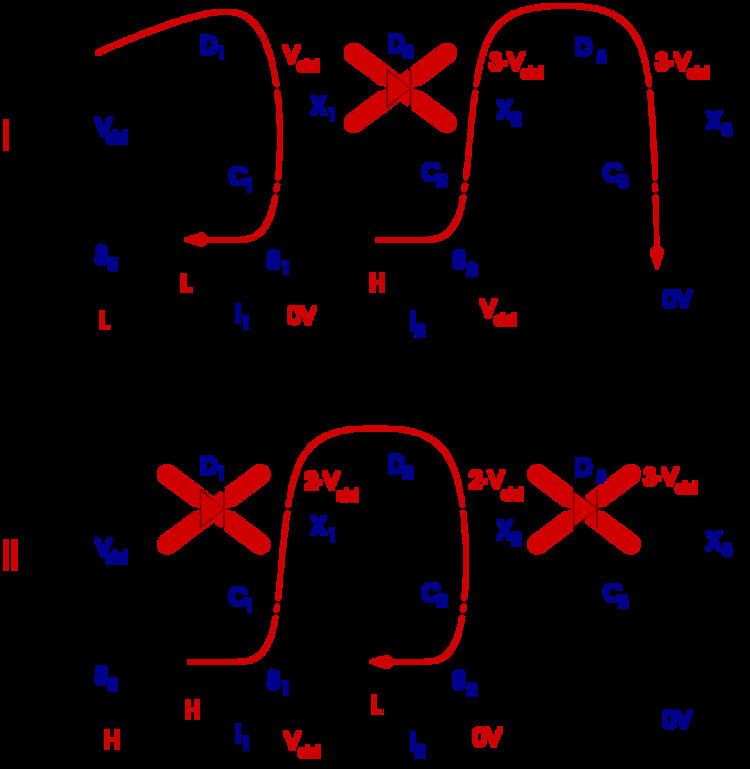 | ||
A charge pump is a kind of DC to DC converter that uses capacitors as energy-storage elements to create either a higher- or lower-voltage power source. Charge-pump circuits are capable of high efficiencies, sometimes as high as 90–95%, while being electrically simple circuits.
Contents
Description
Charge pumps use some form of switching device(s) to control the connection of voltages to the capacitor. For instance, a two-stage cycle can be used to generate a higher pulsed voltage from a lower-voltage supply. In the first stage of the cycle, a capacitor is connected across the supply, charging it to that same voltage. In the second stage of the cycle, the circuit is reconfigured so that the capacitor is in series with the supply to the load. Ignoring leakage effects, this effectively provides double the supply voltage to the load (the sum of the original supply and the capacitor). The pulsing nature of the higher-voltage output is typically smoothed by the use of an output capacitor.
An external or secondary circuit drives the switching, typically at tens of kilohertz up to several megahertz. The high frequency minimizes the amount of capacitance required, as less charge needs to be stored and dumped in a shorter cycle. The capacitor used as the charge pump is typically known as the "flying capacitor".
Another way to explain the operation of a charge pump is to consider it as the combination of a DC to AC converter (the switches) followed by a voltage multiplier.
The voltage is load-dependent, and higher loads result in lower average voltages.
Charge pumps can double voltages, triple voltages, halve voltages, invert voltages, fractionally multiply or scale voltages (such as ×3/2, ×4/3, ×2/3, etc.) and generate arbitrary voltages by quickly alternating between modes, depending on the controller and circuit topology.
Terminology for PLL
The term charge pump is also commonly used in phase-locked loop (PLL) circuits even though there is no pumping action involved unlike in the circuit discussed above. A PLL charge pump is merely a bipolar switched current source. This means that it can output positive and negative current pulses into the loop filter of the PLL. It cannot produce higher or lower voltages than its power and ground supply levels.
